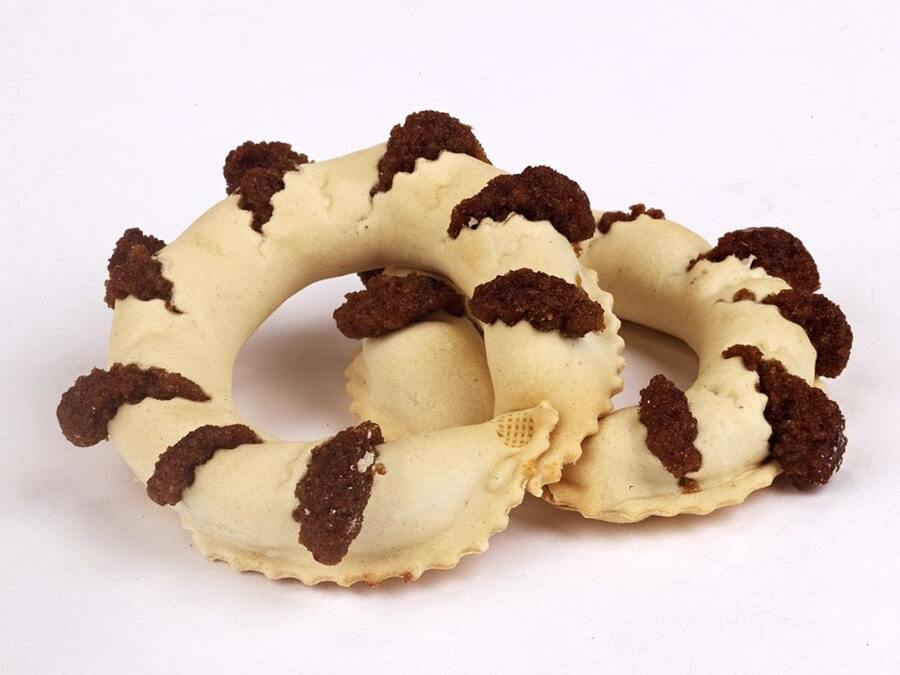Embark on a culinary journey to the Azores with this traditional recipe for “Espécies de São Jorge,” also known as Portuguese Horseshoe Cookies.
A cherished treat steeped in cultural heritage, these cookies blend the aromatic zest of lemon and anise with the warmth of cinnamon, enveloped in a delicately crafted dough.
Perfect for special occasions or as a delightful everyday snack, this recipe offers a taste of the Azorean spirit and craftsmanship.
Follow along as we simplify the art of creating these unique, lattice-look cookies that are as delightful to the eye as they are to the palate.
Ingredients:
- 2 ½ cups all-purpose flour
- 1 teaspoon baking powder
- ½ teaspoon salt
- 1 teaspoon ground cinnamon (optional)
- ¾ cup unsalted butter, softened
- ⅔ cup granulated sugar
- 2 large eggs
- 1 teaspoon pure vanilla extract
- Zest of 1 lemon (or orange for a variation)
- Powdered sugar, for dusting
Instructions:
- Preheat your oven to 350°F. Line two baking sheets with parchment paper and set aside.
- In a medium bowl, whisk together the flour, baking powder, salt, and cinnamon (if using). Set aside.
- In a large mixing bowl, beat the butter and sugar until light and creamy, about 2-3 minutes.
- Add the eggs one at a time, mixing well after each addition. Stir in the vanilla extract and lemon zest.
- Gradually add the dry ingredients to the wet mixture, mixing until a soft, pliable dough forms.
- If the dough is too sticky, chill it for 15-20 minutes.
- Take small portions of dough (about a tablespoon) and roll them into 4-inch ropes.
- Shape each rope into a horseshoe and place on the prepared baking sheets, spacing them about 1 inch apart.
- Bake for 12-15 minutes or until the edges are lightly golden.
- Cool on the baking sheets for 5 minutes before transferring to a wire rack to cool completely.
- Dust the cooled cookies generously with powdered sugar before serving.



I tried to follow the recipe, but I couldn’t find anywhere how to make the cookie dough, the base for the spices.
Hi! Being that many Flemish moved to the Acores, I went in search of a Flemish dessert which resembles our beloved especie. I found a similar recipe. It’s called Liers Vlaaike and is from the Flemish town Liers. The filling also uses bread crumbs and spices and the “crust” is similar but shaped into a small tartlet shape. Interesting history.